It’s a hard truth: not everyone who comes in contact with your brand will end up buying from you. But with the help of an e-commerce marketing funnel, you can turn more people’s curiosity into paid purchases.
When some business owners hear the words “marketing funnel”, they start to think of the most convoluted way to market their e-commerce business.
I’m here to tell you, that’s not necessary.
You can easily design an e-commerce marketing funnel that can help to optimize your marketing efforts and increase your online sales. The truth is that the not-so-secret sauce to a successful e-commerce store is an amazing marketing funnel.
For this e-commerce marketing funnel, we’ll be focusing on the following:
- What An E-commerce Marketing Funnel Looks Like
- The Awareness Stage
- The Consideration Stage
- The Decision Stage
- The Purchase Stage
- The Repeat Customer Stage
Let’s get started!
To give you an idea of how you’ll be setting up your e-commerce marketing funnel, below is Sumo’s perfect representation of it:
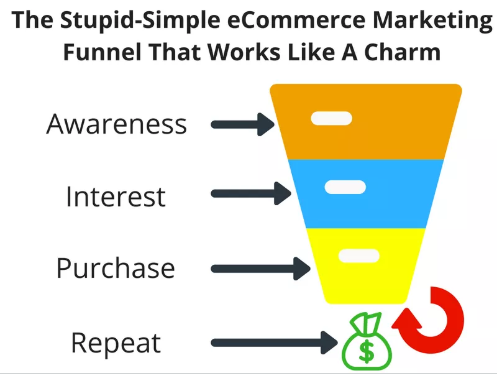
Smart Insights found out that, on average, 43.8% of your site visitors view a product page, and only 3.3% of them end up making a purchase. That’s a drastic drop, but it gives you an idea of how many visitors make it down an e-commerce funnel. This is what happens during a buyer’s journey.
Understanding your buyer’s journey is important because ultimately, every good funnel is modeled after your customer’s first point of contact to the final stage of making a purchase.
In the first three stages of your funnel – Awareness, Interest, and Decision – the buyer’s journey plays a significant role in pushing your potential lead to the last step, making them a repeat customer.
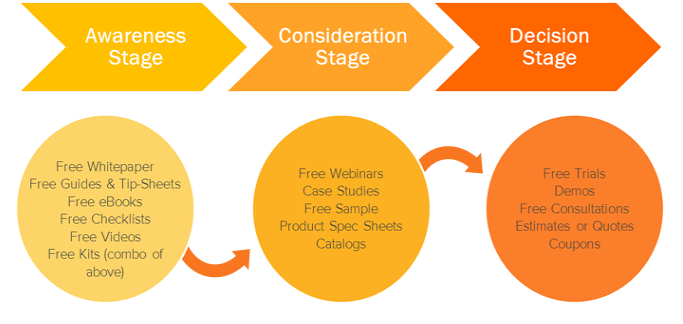
Ecommerce Marketing Funnel: The Awareness Stage
Buyers in this stage: This buyer recently interacted or found your content online, through a social media post, or they may have visited your website for the first time while searching online for a particular topic or keyword.
They’ve just been made aware of your brand, but they probably aren’t familiar with your services or products. They might not have even considered the solution to the problem your products can solve.
During this stage, your first impression matters the most. Blue Corona found that 47% of people expect a web page to load in 2 seconds or less before they opt out, making your website load time just one of the many things that can turn people away from the first stage of your funnel.
How to Build Awareness For Your Marketing Funnel:
If only people would come to our website and make purchases without a second thought. Unfortunately, that’s not how people shop online.
Before we even consider the buyer that just landed on your website or came in contact with your brand, you’ll need to do a few things to bring more of them your way. Not everyone knows about your brand, so your job is to work on your awareness.
Overall, no matter what you do for this stage in your ecommerce funnel, your main goals for this stage are building your profile and trust among new visitors and potential customers.
Use Social Media to Build Awareness
78% of respondents said that companies’ social media posts impact their purchases. If you don’t have a presence on social media or you’re not as active, you’ve missed out on more than your fair share of new customers.
Brands like Glossier grow a cult-like following on social media where customers consistently spread the word on their products online and off. Instagram is a large part of the brand’s success and increase in sales. In fact, when they first launched in 2017, they relied solely on Instagram to promote their products. It proved to be the right move.
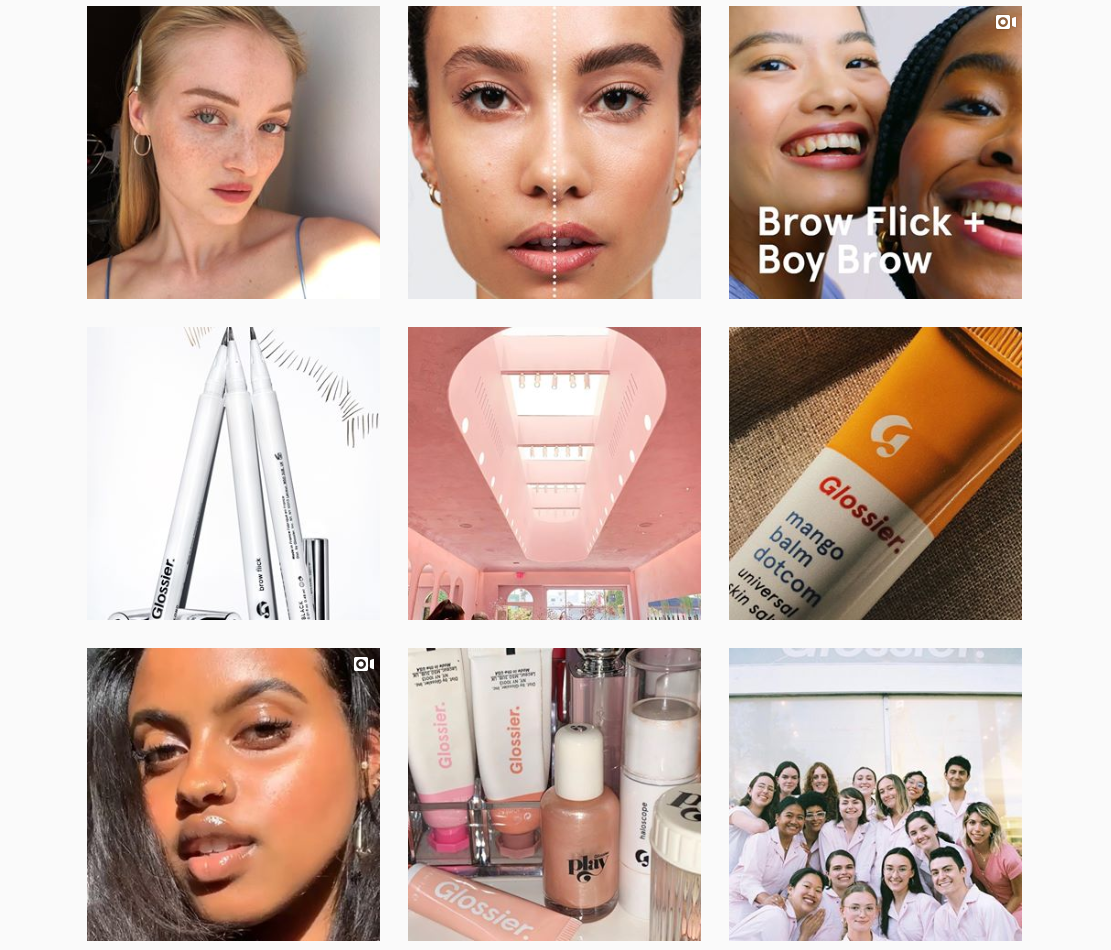
When you take a closer look at Decoding Glossier’s Instagram Marketing Strategy, being proactive on Instagram pays off when it’s done right.
When you use social media, be sure to cover all your bases if you want to see real results. You can download your free social media checklist here (no email required!).
Pro Tip: Looking for more ways to harness the power of social media? Here’s a guide to point you in the right direction to find out Which Social Media Marketing Platform is Right for Your Business.
Use Video Marketing to Build Awareness
Forbes found that 74% of consumers say there has been a direct link between watching a video on social media and purchasing something.

Brands like Home Depot have been leaders in video content marketing for their products and services, raking in millions of viewers per month. This video, in particular, has over 75,000 viewers and the engagement to match.
Promote your video on social media and other platforms to not only boost visits to your website, but to also keep potential customers on your site for longer. You can create videos like:
- DIY
- Answering frequently asked questions
- Showing off new products
- Behind the scenes clips
- Lookbooks or product catalogues
Pro Tip: Despite the popularity of Instagram and Facebook, video content on Youtube lives longer and grows in engagement when compared to the two. YouTube is also the second largest search engine in the world. Consider putting your video content there first if you’re serious about video marketing and use these 18 Powerful Ways to Grow Your YouTube Channel.
Improve Your Website Design to Build Awareness
Today, having a website for your business is just as important as the products you sell. 48% of people report that a website’s design is the primary factor in determining the credibility of a business. If your website design is outdated or unattractive, then you can be sure to see organic traffic turn back just as quickly as it comes.
The perfect example of a brand that’s seen a significant improvement in sales due to their website design would be the health brand New Chapter.

They used rigorous A/B testing to create the best possible user experience. Adding quizzes, product bundles and everything in between, New Chapter provides a personalized, choose-your-own-adventure experience for its customers and prospects.
New Chapter’s marketing team reported that in less than one year, their store has gone from a $0 to a thriving, seven-figure website, due to their extraordinary site design.
Pro Tip: From navigation to your home tab, there’s a lot that goes into creating a well designed website. Instead of clicking around to see what works, here’s a detailed guide on Website Creation Fundamentals That You Could Be Neglecting to improve your website.
Use SEO to Increase Awareness
If awareness is the name of the game, you should already know that SEO is the most important thing on this list. With 1.17 billion unique searches every month, you want to be at the top of the list when people search for topics or keywords related to your business once they click that search button Google.
Why?
Being #1 on Google drives 32.5% of the traffic to your website. That 32.5% decreases the further down you are in ranking.
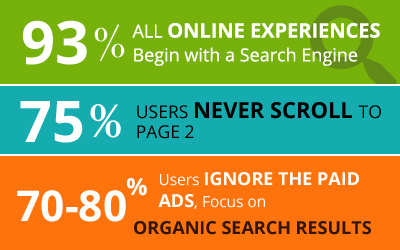
If you haven’t been getting enough traffic to your website, your SEO ranking could be the main culprit. You can use this Ecommerce SEO Checklist to take an inside look at how you can improve your SEO.
Clothing brand Misguided takes their SEO marketing very seriously. In January 2018, if you Googled “jeans and a nice top”, not only would you get Misguided as the top result, but you’d see a news carousel pop up with articles from The Sun, Metro, Cosmopolitan and POPSUGAR showing off Misguided products that matched the search.
This all started with Misguided answering a tweet from a customer with a meme.
Noted! pic.twitter.com/S92Ge35Szc
— Missguided (@Missguided) January 3, 2018
Which goes to show that SEO and social listening can make a powerful pair when looking for ways to increase sales and awareness.
WE DID IT. Now shop to it ??? https://t.co/rNmBQnSkkh pic.twitter.com/waZwqajaRA
— Missguided (@Missguided) January 15, 2018
Use Blog to Increase Awareness
Create a blog on your website to build up your SEO ranking. A blog allows you to create shareable and relevant content that your potential customers are searching for online. For example, Beardband sells, as you’d expect, beard oils and grooming tools. They write articles showing the reader how to take care of their beards and what types grooming tools would be best for them, helping to soft sell Beardband products.

Pro Tip:
If you already have a blog or you’re just starting you can try these 6 Tips to Easily Optimize Blog SEO for Search Engine to grow your traffic and increase sales.
Ecommerce Marketing Funnel: The Consideration Stage
Buyers in this stage: This buyer has come in contact with your content more than once and is considering making a purchase. At this stage your content marketing is starting to pay off, your brand has begun to build trust with this buyer.
About 81% of shoppers conduct online research before buying, and 71% of consumers believe it’s very or somewhat important that they recognise a brand before they make a purchase. This means that now more than ever, you need to be on the consumer’s mind before they lose interest or forget and buy from other brands.
At this stage you should also segment your market to get to know your customers better. Here are 5 Types of Market Segmentation & How To Use Them.
That’s because they’re still in the consideration stage, not the purchasing stage. At this stage, it’s time to capture those leads with your newsletter, demo videos, downloadable content or connecting with them via social media.
How to Create a Consideration Marketing Funnel
During this stage in your e-commerce marketing funnel, a lot of potential customers either get lost or leave the funnel completely because they were left alone and their interest cooled. Avoid the mistake of relying solely on awareness to get your visitors to the purchase stage.
Here are some ways you can engage with your visitor in the consideration stage of your e-commerce marketing funnel:
- Offering an email newsletter or free course teaching people about your products and the problems or pain points they solve with customer reviews.
- Creating a content upgrade, such as a free eBook, a product sample, or a checklist to help your visitors solve their problem.
- Engaging with your followers on social media by messaging them, tagging them, and responding to their comments.
Share Testimonials & Reviews on Your Online Platforms
Share your testimonials and reviews on all your online platforms. You want to make sure that no matter what stage or platform your potential customer is on, they see people who enjoy what you have to offer (and so potentially see themselves enjoying it as well).
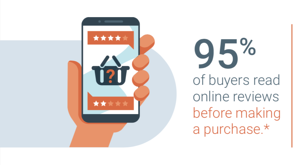
Testimonials are so powerful that over 55% of shoppers claim that testimonials and reviews influence their buying decision.
The first step is to add a product review section to your ecommerce website. 78% of online shoppers value the availability of product reviews by other shoppers, as well as the opportunity to add their own. Reviews are simply UGC in words and comments.
Popular e-commerce stories like Amazon can attest to how powerful “the read reviews before buying” culture is on a website. Because of that, Amazon has maintained a strict policy towards safeguarding the trustworthiness of its reviews by banning sponsored reviews.
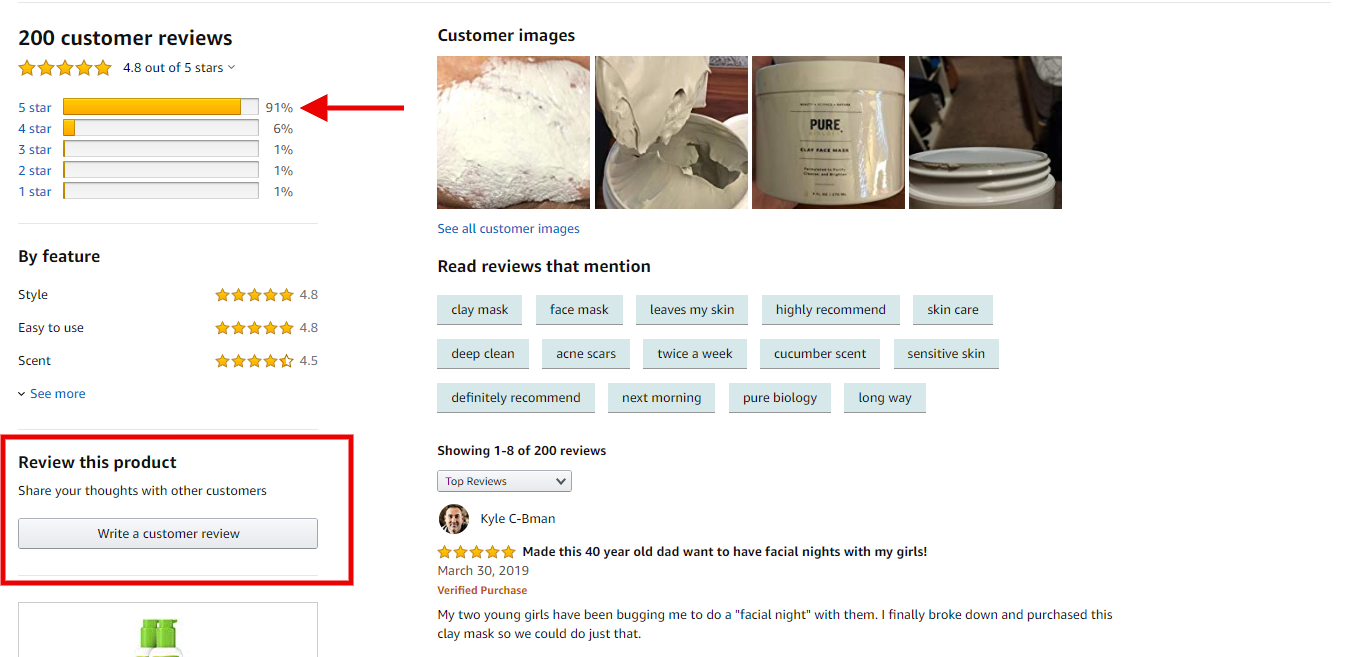
Share UGC (User Generated Content)
23% of consumers say that recommendations on social media influence their buying decisions and 86% of millennials say that UGC is a good indicator of the quality of a brand.
Taking all of this into account, UGC is one of the best ways to market your brand in this stage of your ecommerce funnel. Plus, UGC is free advertising from trusted customers.
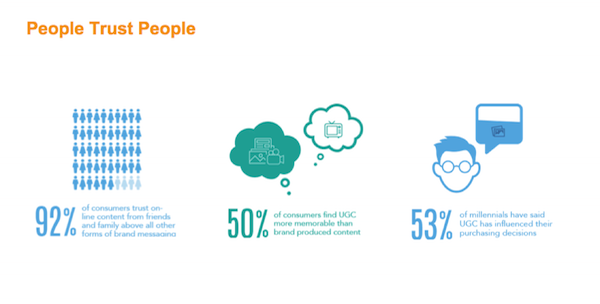
User Generated Content is any type of content that has been created and posted by an unpaid customer, influencer or fan. It can refer to pictures, videos, tweets, blog posts, and everything in between, as long as it’s promoting your brand.
They say a picture is worth a thousand words, which is why nothing compares to seeing another person rave about your product to the world. Preview App is an Instagram scheduling tool that prides itself on its community of Insta-savvy content creators who love their app.
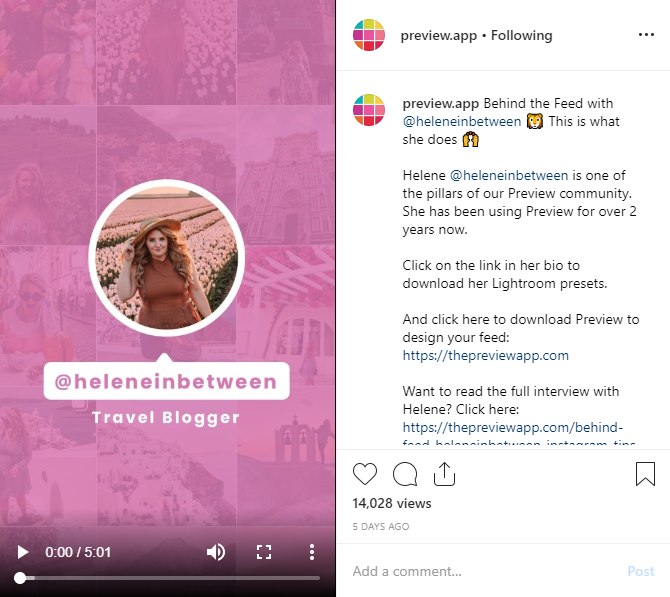
Pro Tip: Take a look at Hubspot’s The 10 Best User-Generated Content Campaigns on Instagram, take notes and learn about ways you can incorporate some of that UGC magic into your online and social media efforts.
Show off Product Descriptions
The key to writing your product descriptions isn’t exclusively to sell. Rather, it’s to explain how you solve a problem that the buyer has. You should ensure that your product’s benefits speak to someone who needs or wants to buy this to make their life better.
When Amazon promoted the new line of products from Belei, they didn’t talk about the price or list reasons you should buy it. They spoke about how each product was made without parabens, phthalates, or sulfates, and that they’d never tested on animals, targeting environmentally-conscious shoppers.
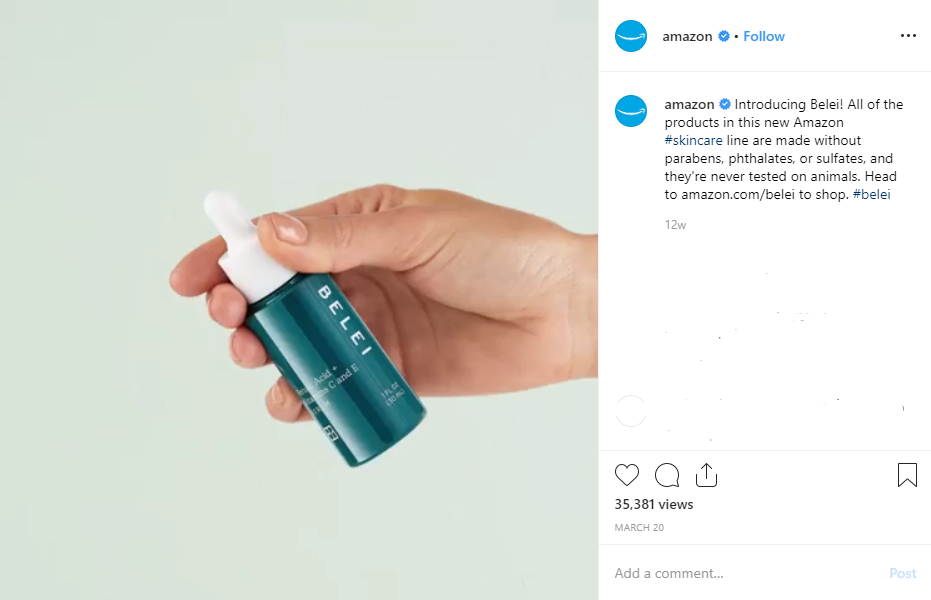
Another example is Bean Bar, who add a little personality to each one of their brews. Both in store and online, they speak about how the benefits of their products and what makes it so special.
Ecommerce Marketing Funnel: The Decision Stage
Buyers in this stage: At this point in the funnel your visitor is has moved far from browsing products and is thinking of making a purchase…but they haven’t.
They’ve seen your content and customers that rave about your products. Now it’s time to give them a nudge towards the shopping cart.
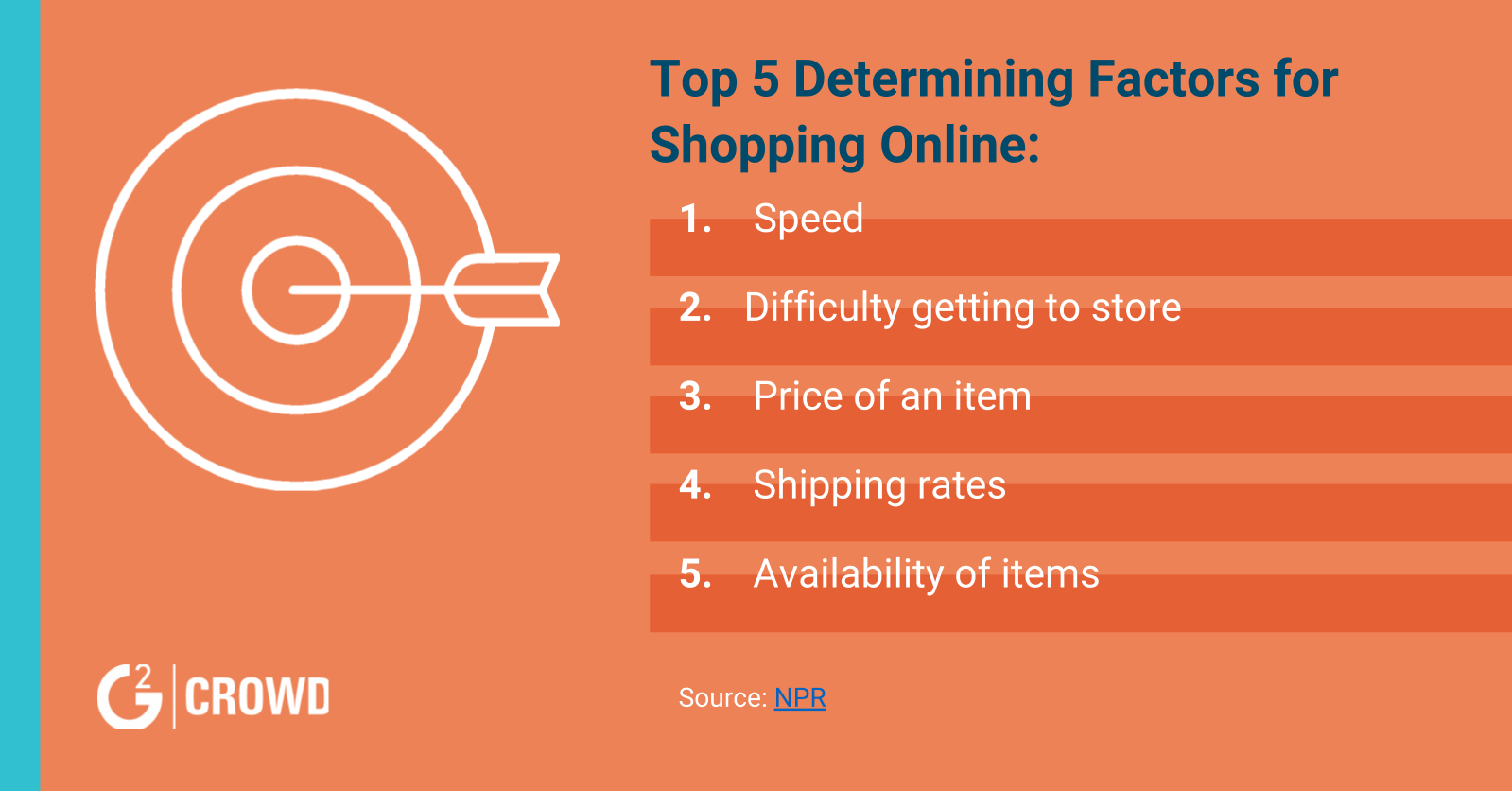
Offer Good Customer Service
Good customer service is hard to find, online and offline. If you were interested in buying a product from your favorite store and the sales rep ignored you, how often would you buy from that store?
Never.
Poor customer service cost more than the customer service rep you’d be paying. U.S. companies lose more than $62 billion annually due to poor customer service.
You have to treat your e-commerce store just like a brick and mortar store. Yes, your customers can order and check out on their own, but they still need your customer service to help them complete the purchase.
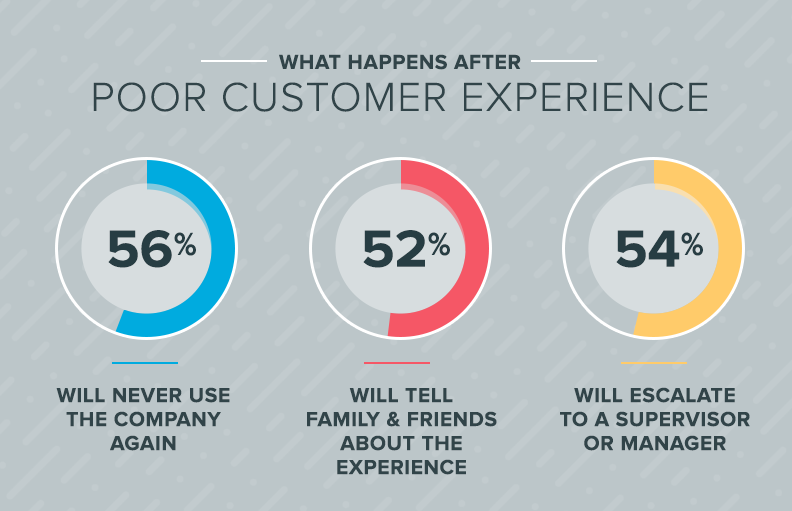
To offer great customer service, you can add the following to your site and checkout process:
1. Live Chat
2. Chatbots
3. Emails
4. FAQ Pages
Take a look at Fashion Nova’s customer service efforts on their e-commerce website:
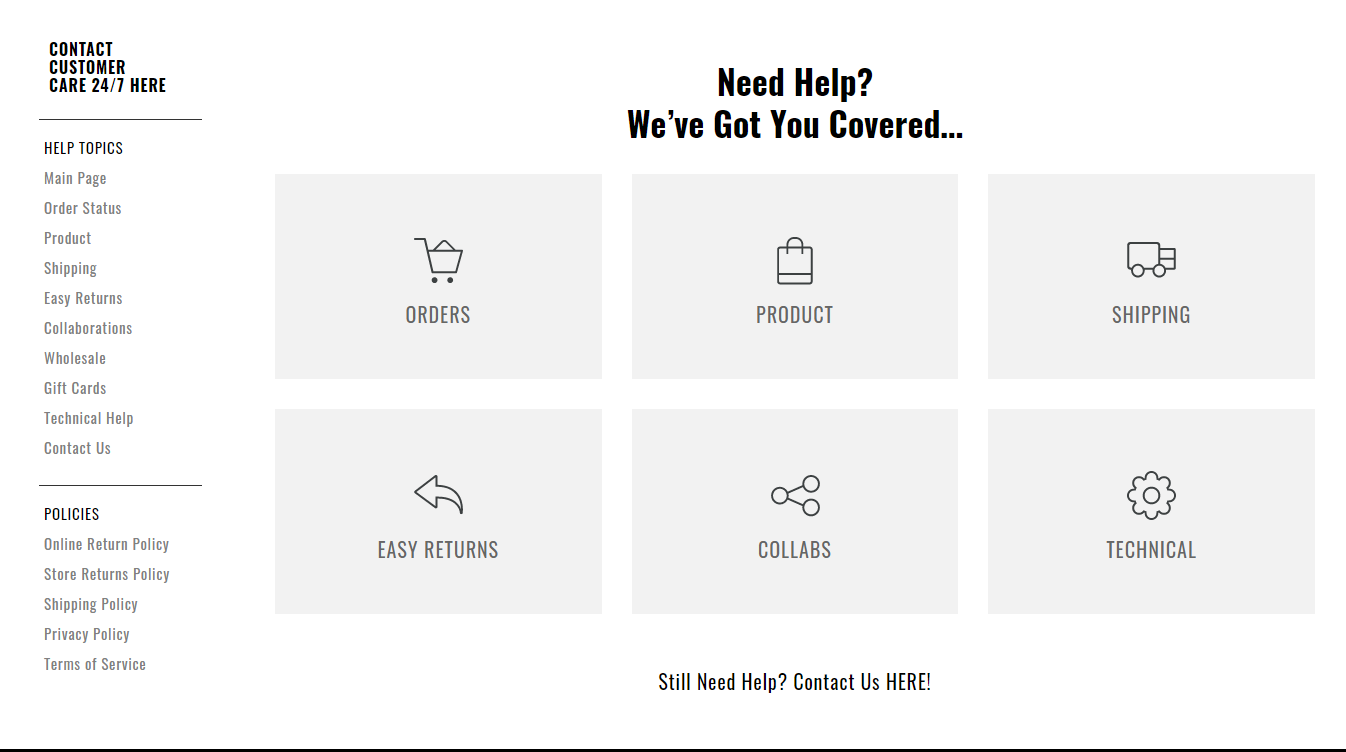
Fashion Nova even has a dedicated Twitter account for customer service to help their customers every step of the way.
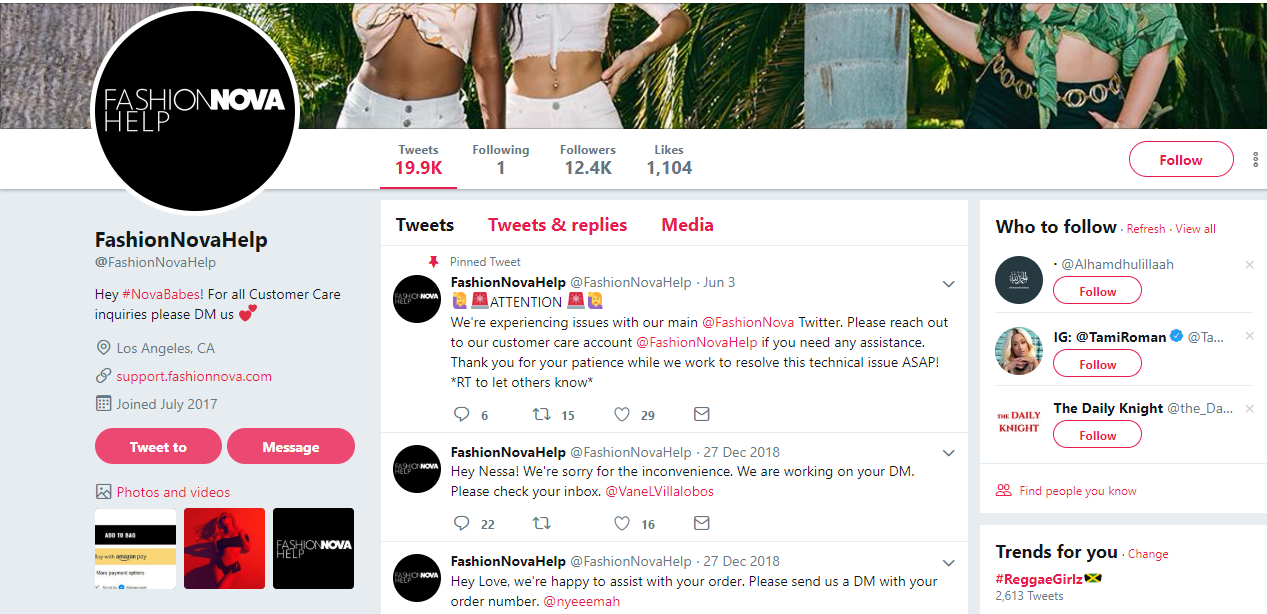
Provide Free shipping
90% of online shoppers prefer free shipping, even if their package takes longer to arrive.
88% of consumers say free return shipping is an important factor in their purchase decisions; that’s why this brand offers it with every order.
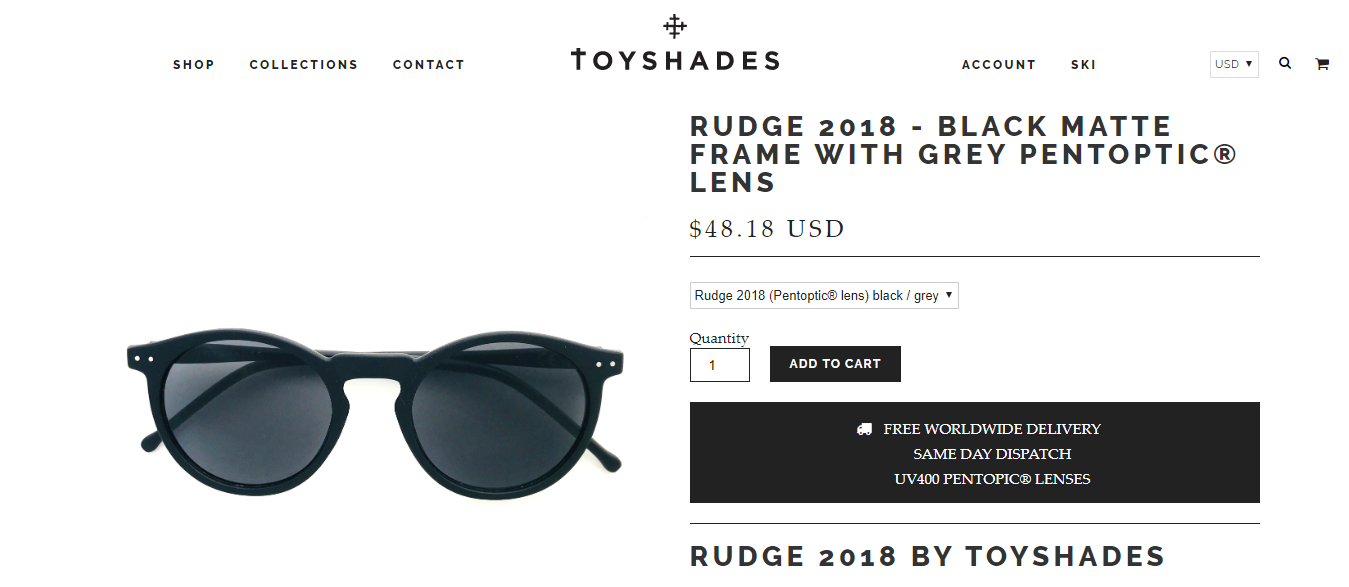
Toyshades is an example of how one brand increased sales with free shipping. They incorporated shipping costs into all their sunglasses, so they’re able to reduce friction associated with shipping costs during the checkout. They found that when a site had free shipping, it encouraged 93% of shoppers to buy more.
Ecommerce Marketing Funnel: The Purchase Stage
The buyer in this funnel has successfully passed the awareness, consideration, and the decision phase of your marketing funnel.
Once this visitor has clicked the “Complete Order” button, you’ve got yourself a sale. The problem is, you’ve lost a few leads going down the funnel, and the ones that are here are a bit hesitant.
So how do we make sure this buyer doesn’t change their mind, or start second guessing their purchase?
Just like an in-store customer, they want to look around for the best deals to make sure they’re saving before they make a final purchase. Which most likely means the visitors in this part of the funnel have already scouted out your competition and they’ve shortlisted your website.
At the end of the day, your job here is to convince the visitor that you’re way better than the competition.
Below are a few ways to tip the scales in your favor.
Offer a Discount to New Buyers
Earlier, we spoke about how important it is for consumers to find the best price for a product. Some die-hard deal seekers are willing to search high and low for the best deals before they pull the trigger and complete a purchase.
Discounts aren’t about losing money. As an e-commerce owner, they’re a way to build customer loyalty and increase the lifetime value of each customer. That’s how important they are to your customers.
You can showcase discounts everywhere. On popups, website banners, and sidebars. Never wait until after a user reaches the checkout to give them a special promotion.
With Wishpond’s Pop-up builders, you can offer your shoppers a free discount and offer with seamless integration and beautiful templates for opt-Iin pop-ups, sidebars and welcome mats that are sure to drive sales.

Create Easy Logins for New User Accounts
Most people choose to shop online because of the ease and convenience it provides, which is why some customers don’t mind creating user accounts to purchase products, while the majority just want to get in and out with their order without any hassle.
Account creation factors into 75% of customers who leave e-commerce stores without buying anything. If we’re crunching the numbers, it’s the reason [22% of users end up leaving a website], and 28% of all shoppers say that it’s part of the reason they never completed a purchase.
I’m dropping a lot of numbers here, but it’s to give you an understanding about how important account creation is in affecting your sales.
ASOS gives customers the option to sign in for orders using social media accounts like Facebook, Twitter, and Google. Users get quick access to user accounts, and companies get all of the information they need to proceed with the order.

Use Trusted Payment Methods
You want to make your customers’ buying process as easy as 1-2-3, or they’ll get frustrated and leave. To avoid that, you can provide more than one trusted payment method.
Every day, new e-commerce websites are popping up, which makes consumers hesitant about who to trust with their credit card or banking information. One wrong slip and their account can get hacked. That’s why trust and transparency are crucial for e-commerce success.
Take notes from Shein, an online clothing brand that sells fashionable pieces to a global audience. They offer the most popular payment methods aside from your typical MasterCard and PayPal features.
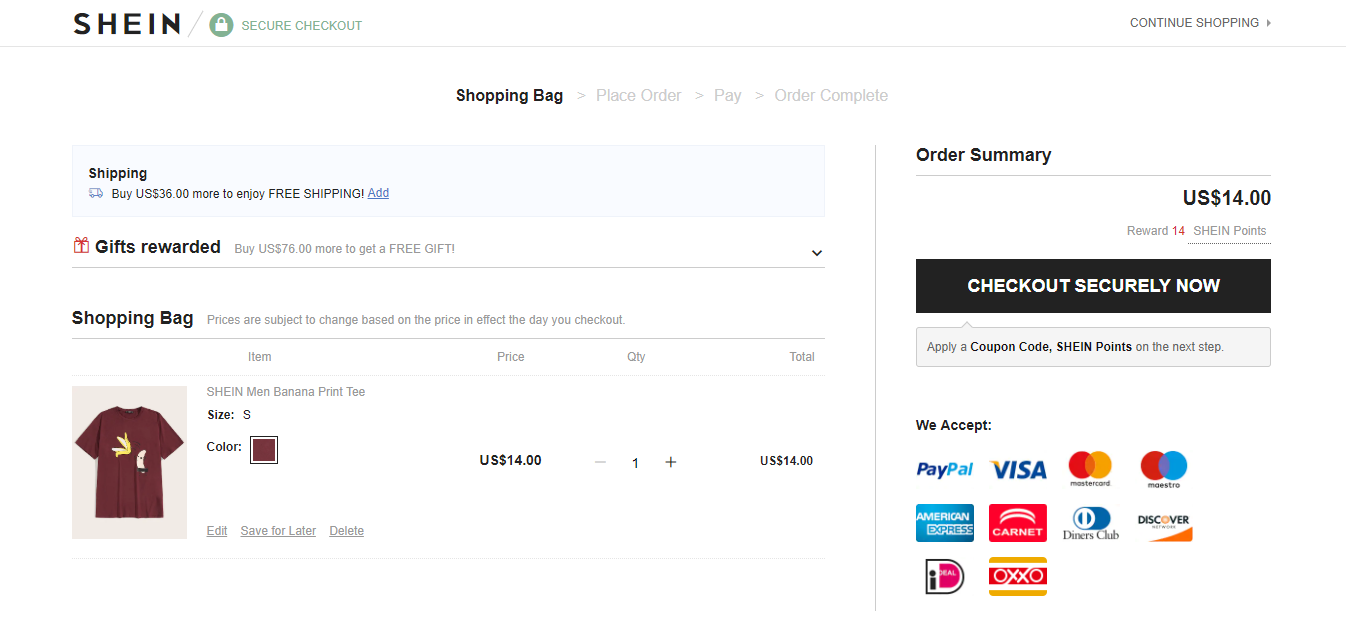
Shopping Cart Abandonment Strategy
It stings when you’re this close to getting a sale when a customer abruptly abandons ship and leaves their cart.
But don’t hold it against them. Maybe they were planning on completing their order when their boss needed an email asap, or they got lost in the rabbit hole of social media and forgot to complete their order.

The average cart abandonment rate is 67.91%, and it’s growing year by year. The best way to get customers back on track is to have a shopping cart abandonment strategy,. That means cart abandonment emails with discounts, offers, and free shipping, exit pop-ups and opt-in forms, and so much more. Here are 5 Proven Strategies to Combat Shopping Cart Abandonment.
Ecommerce Marketing Funnel: The Repeat Customer Stage
Congrats! You now have a paying customer. This may be the smallest section and the most profitable.
But you don’t want a one night stand – you want a long term commitment; you want a repeat customer.
Never make the mistake of thinking that a customer might come back. That could give your competition the edge to steal away new or existing customers. Now is not the time to relax, so consider the following helpful tips if you want to increase your repeat customers.
Retargeting Ads on Facebook & Instagram Ads
The magic of retargeting ads is that they’re seen by people who simply clicked or visited your website or online content once. One click is all it takes.
Retargeted ads are mainly used on Instagram, Facebook, and Google. Retargeting works by placing a small cookie in a user’s browser. If that user leaves before making a purchase, you’re able to show them targeted ads to encourage them to come back.

Ready to create your own retargeting ad? Take a look at this guide on The Anatomy of a Retargeting Ad That Converts to help you get started.
Stay Active on Social Media
Posting every now and then isn’t enough when it comes to social media. Now more than ever, social media is a competitive playground for business. Once a customer decides to follow you you need to be active to keep their attention on a busy social media feed.
Social media marketing isn’t just for new customers starting at the top of your funnel; it’s also for customers who need to be reminded of how awesome your products are and why they need to keep buying from you.
Wendy’s is a brand known to show off its personality and engage with customers on all of their social media platforms.
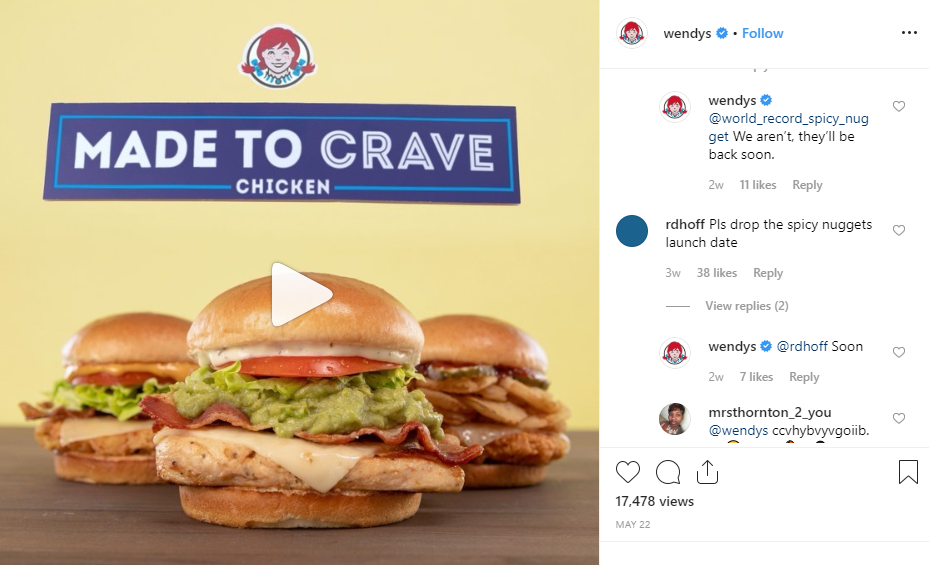
Run Contest & Giveaways
Social media contests are a great way to pick up sales and grow engagement with your brand online. Running a social media contest is relatively straightforward, as well as deciding what type of social media contest you want to run.
BarkBox sells monthly subscriptions of dog toys, treats, and chews. In 2016 they created their branded hashtag #BarkBoxDay to help drive awareness for their products. Since then, the hashtag has been used by over 173,665 Instagram posts and counting. and is a trending hashtag among the doggie community.
Barkbox doesn’t have many giveaways or contests on their page. Instead, they collaborate with dog-themed brands that host giveaways and contests aimed at getting more followers.
We teamed up with @barkbox to #giveaway FIVE 1-month BarkBoxes ??
How to enter: @ 2 friends on this tweet and then leave a comment on this article: https://t.co/cnw9x4bCBi pic.twitter.com/A9qHKCQr9S— slickdeals (@slickdeals) July 6, 2018
Need help with your social media contest?
Book a free call to learn how our team of contest experts can help you create high converting social media contest today.
The Finish Line
There you have it, the complete guide to set up an e-commerce marketing funnel that gets you customers and sales.
Before you’ve even finished setting up your e-commerce marketing funnel, you’ll begin to see potential customers come your way.
The key to continued success is to always be refining your marketing funnel. A/B test your funnel, try to add new designs or items, because no two marketing funnels are the same. One size doesn’t always fit all. You’ll need to find out what works specifically for your e-commerce store.
That’s a wrap!
What do you think? How do you plan to tackle your e-commerce marketing funnel?
Related Articles
- 60 Epic Ways to Get More Leads Today
- The Step-by-Step Guide to Creating a Digital Marketing Sales Funnel
- 3 Quick Strategies To Boost Stagnant Sales

